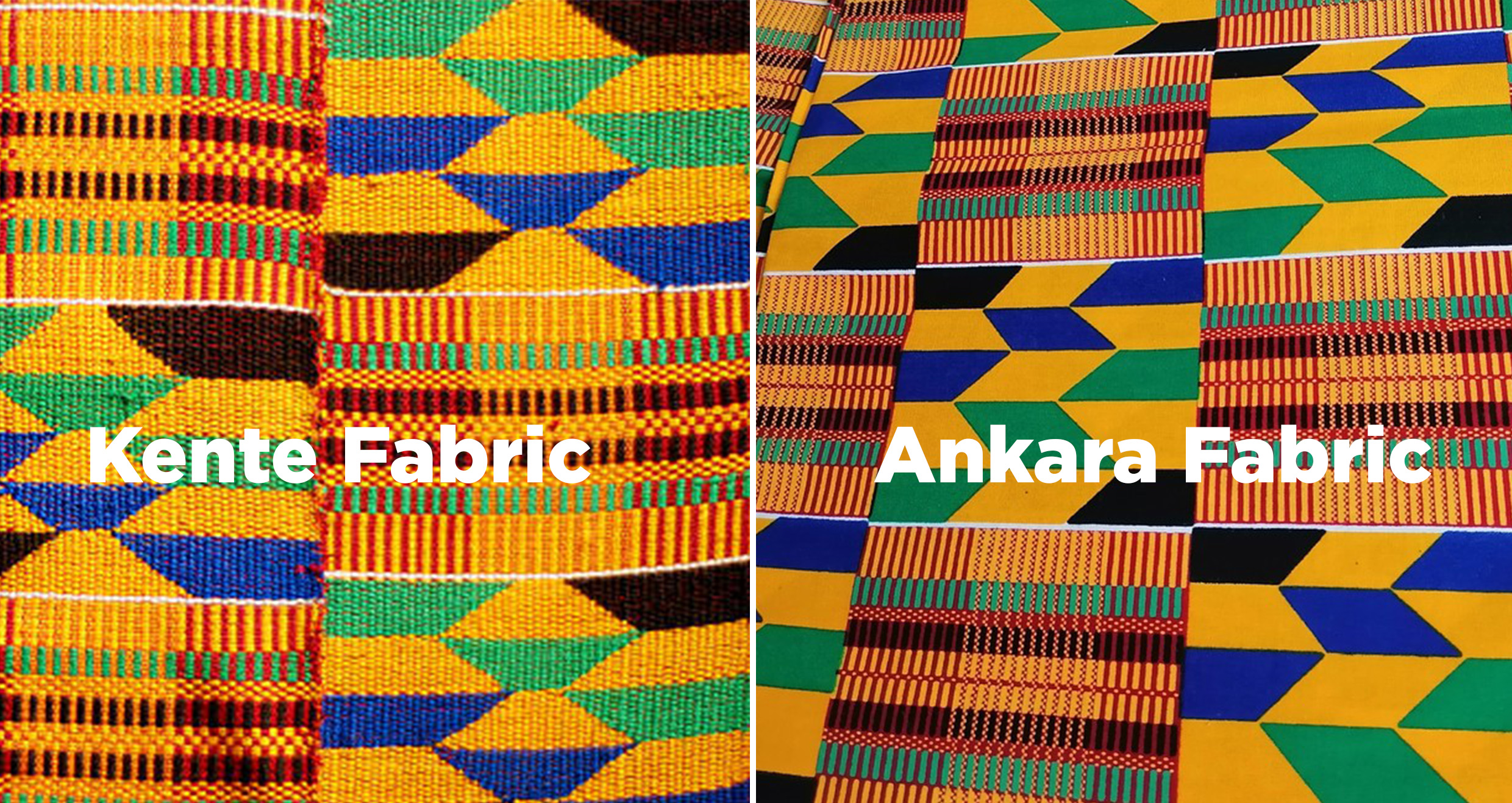© Hinkro Kente 2025. All right reserved. Terms and Privacy.
Built and managed by Nusite IT Consulting Limited
Ankara fabric and Kente fabric are two of the most celebrated textiles in African culture, each with a unique history, production process, and cultural significance. Though both fabrics are vibrant and hold deep cultural meanings, they are distinct in their origins, designs, and usage.
Brief History and Cultural Significance
Ankara Fabric
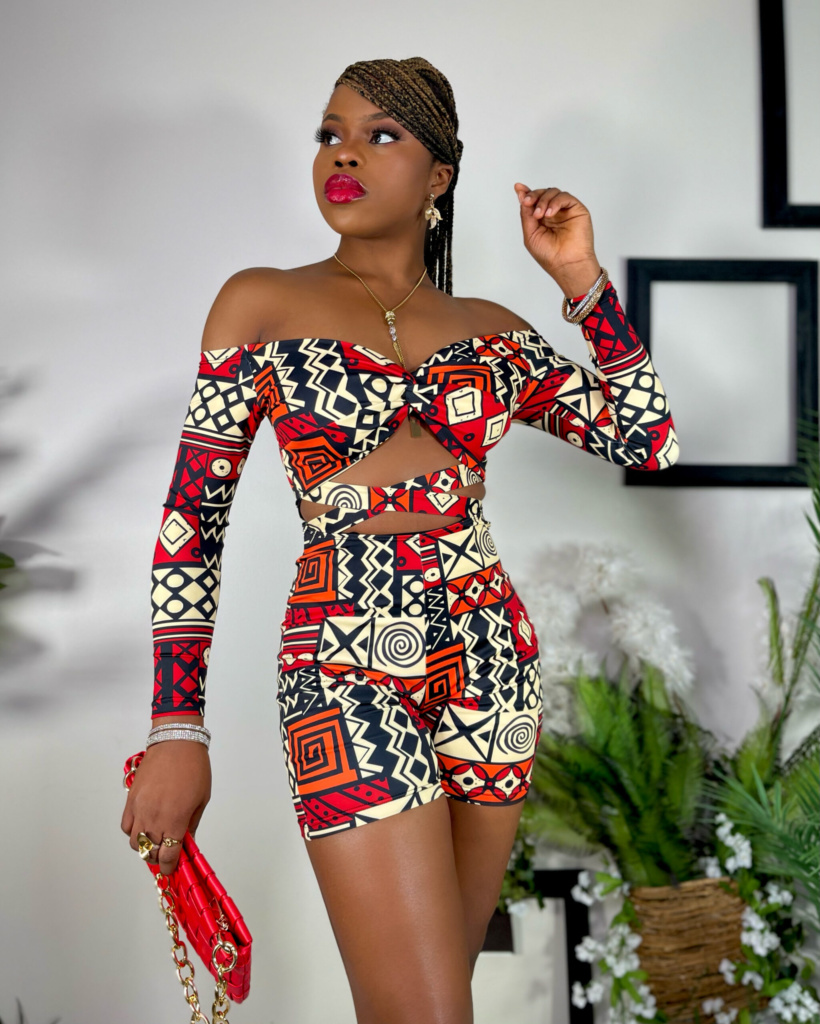
Ankara fabric, also known as African wax print, has an intriguing history that intertwines African, Dutch, and Indonesian cultures. Originally inspired by Indonesian batik, the fabric was mass-produced by the Dutch for the African market in the 19th century. It quickly gained popularity in West Africa, particularly among the Yoruba people of Nigeria, and has since become a staple in African fashion.
Kente Fabric

Kente fabric, on the other hand, originates from the Akan people of Ghana, particularly the Ashanti and Ewe tribes. Kente is deeply rooted in Ghanaian culture and history, dating back to the 12th century. Traditionally, Kente was reserved for royalty and special occasions, symbolizing wealth, status, and cultural pride. Each pattern and color in Kente fabric carries specific meanings, often related to proverbs, historical events, and philosophical concepts.
Production Process: Ankara Fabric
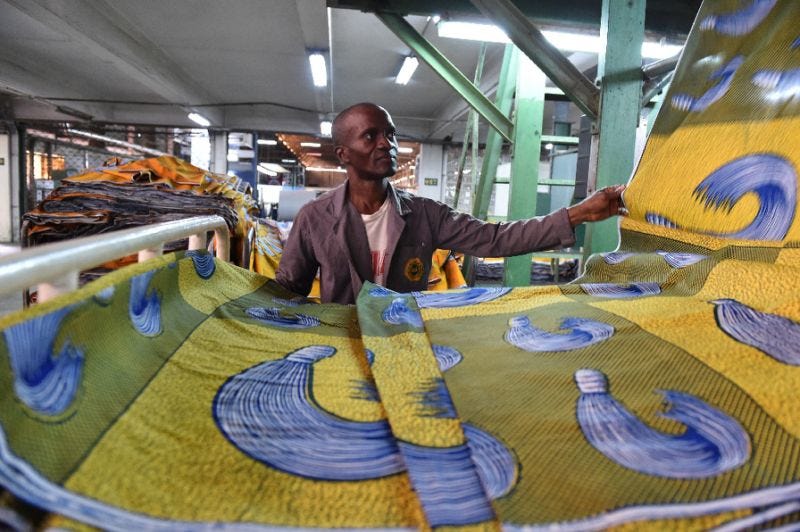
The production of Ankara fabric involves a wax-resist dyeing technique. Initially, a design is drawn on the fabric using wax. The fabric is then dyed, and the areas covered in wax resist the dye, creating intricate patterns. This process may be repeated multiple times with different colors to achieve the desired multicolored effect. Modern wax print production often incorporates digital printing techniques, making it more accessible and affordable.
Production Process: Kente Fabric
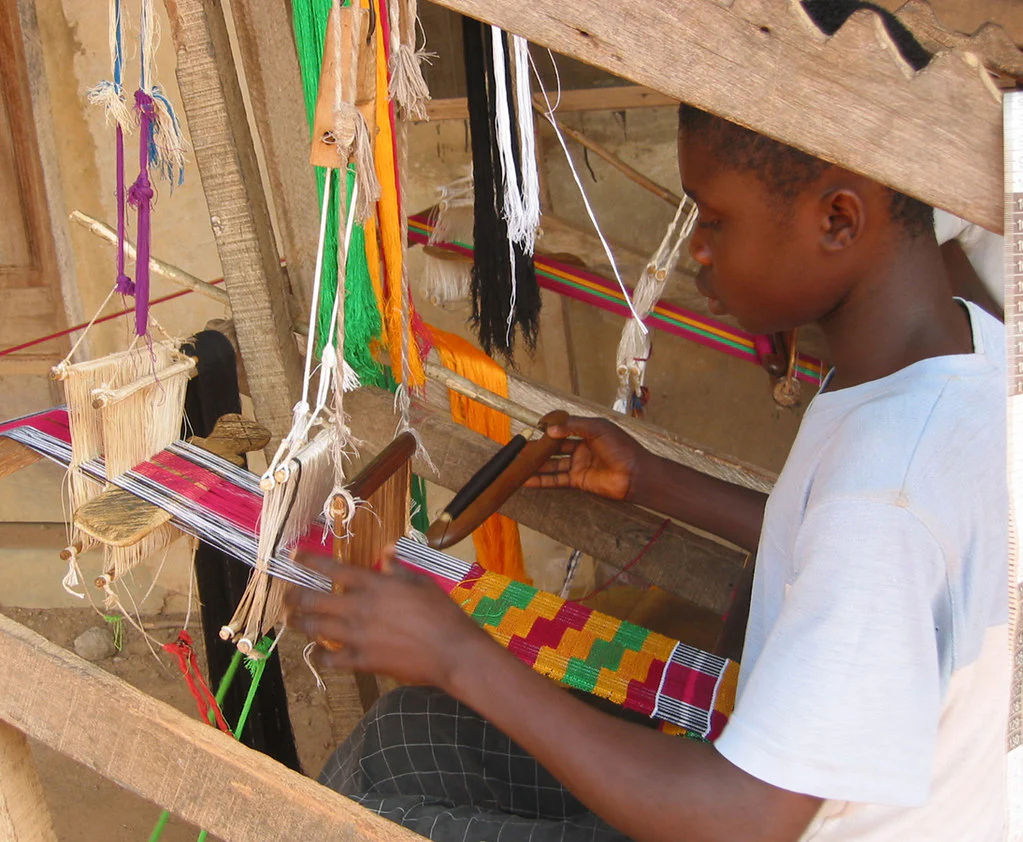
Kente fabric is traditionally handwoven on a loom. The process is labor-intensive and requires a high level of skill. Weavers use silk, cotton, or rayon threads to create narrow strips of fabric, which are then sewn together to form larger pieces. Each strip can feature different patterns and colors, and the weaver’s expertise shines through in the precision and complexity of the designs.
Motifs and Design: Ankara Fabric

Ankara fabric is known for its bold and vibrant designs. Common motifs include geometric shapes, flowers, animals, and abstract patterns. These motifs are often symbolic, reflecting aspects of African culture, nature, and daily life. The colors used in Ankara fabric are bright and eye-catching, making it a popular choice for clothing, accessories, and home décor.
Motifs and Design: Kente Fabric
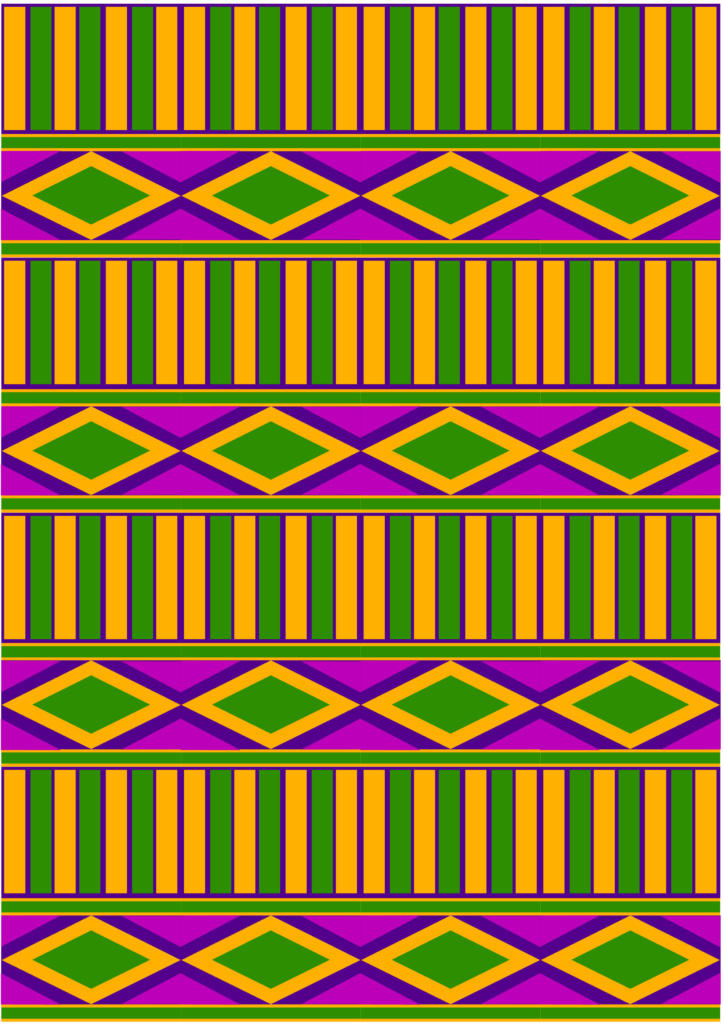
Kente fabric motifs are deeply symbolic and often carry messages or tell stories. Common motifs include “Eban” (protection), “Fathia Fata Nkrumah” (unity), and “Adwinasa” (excellence). The colors used in Kente fabric also have specific meanings: gold represents royalty and wealth, green signifies growth and renewal, and blue symbolizes peace and harmony. Each Kente pattern is a unique work of art, making it a cherished piece of cultural expression.
Price Point: Ankara Fabric
Ankara fabric is generally more affordable than Kente fabric. The price of Ankara fabric varies depending on the quality, design complexity, and production method. Machine-printed Ankara fabric is widely available and budget-friendly, while hand-printed or designer Ankara fabric can be more expensive.
Price Point: Kente Fabric
Kente fabric, due to its labor-intensive production process and cultural significance, tends to be more expensive. Authentic handwoven Kente can be quite costly, reflecting the skill and time required to create it. However, there are machine-made Kente designs available at lower prices, though they may lack the authenticity and intricate detail of handwoven pieces.
Conclusion
Both was print and woven fabric hold significant places in African culture and heritage. While Ankara fabric is celebrated for its vibrant, accessible, and versatile designs, Kente fabric is revered for its rich history, symbolic motifs, and intricate craftsmanship. Whether you choose Ankara fabric for its affordability and variety or Kente fabric for its cultural depth and artistry, both offer a unique glimpse into the beauty of African textile traditions.
For those seeking authentic and exquisitely woven Kente, Hinkro Kente stands out as a premier producer. Their dedication to preserving traditional weaving techniques and delivering bespoke Kente cloth ensures that each piece is a masterpiece. Whether you’re looking to honor a special event or simply appreciate the artistry of African textiles, consider working with Hinkro Kente for a truly exceptional experience.
In summary, while Ankara fabric continues to capture the hearts of many with its bold prints and affordability, Kente fabric remains a timeless symbol of African royalty and craftsmanship. Each fabric tells its own story, weaving the rich tapestry of African culture and heritage.

